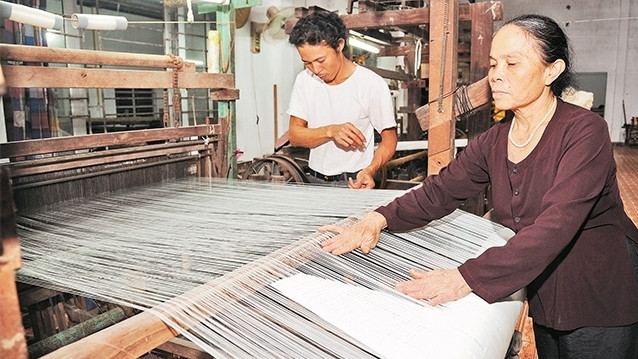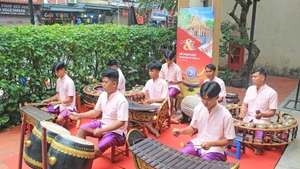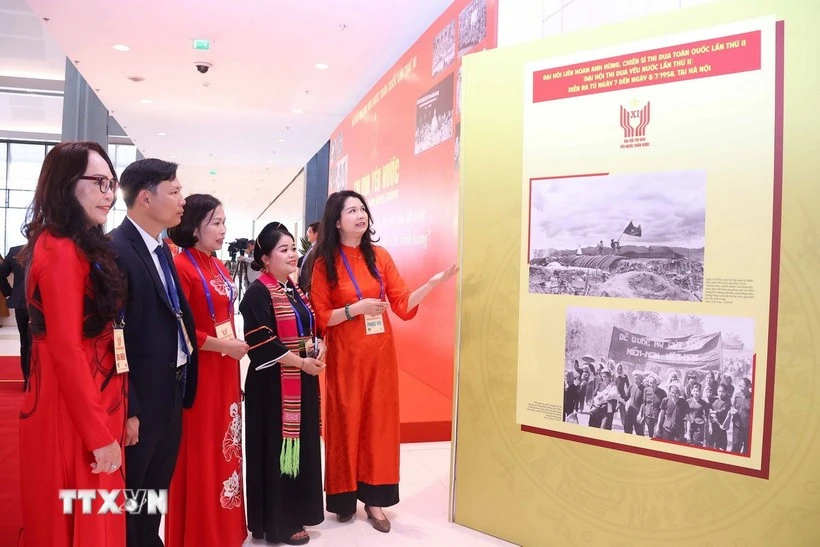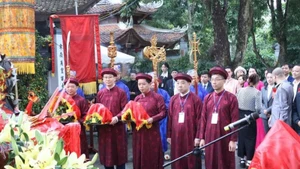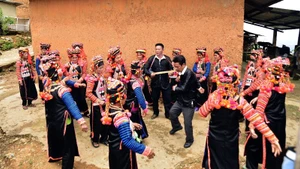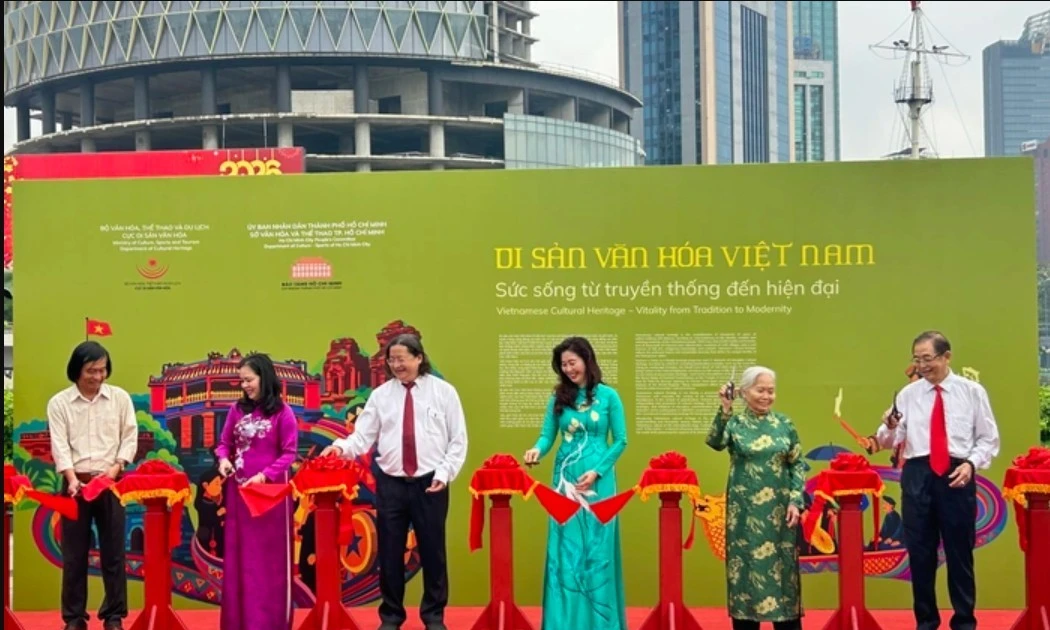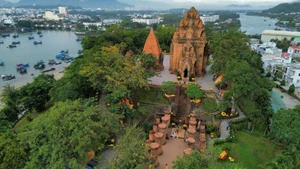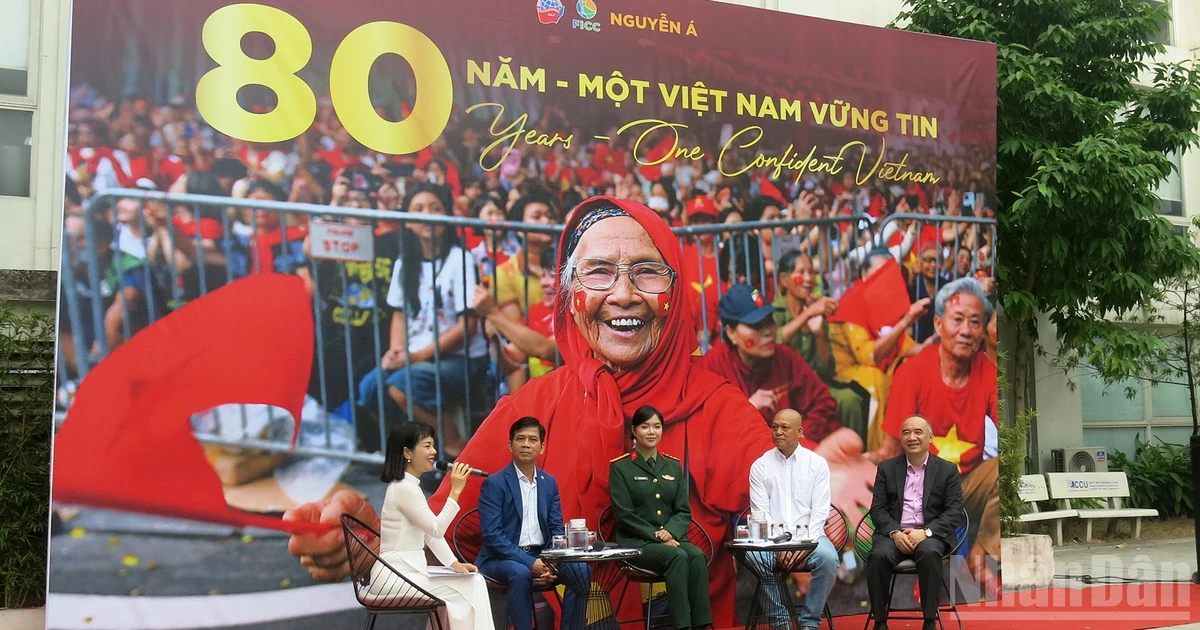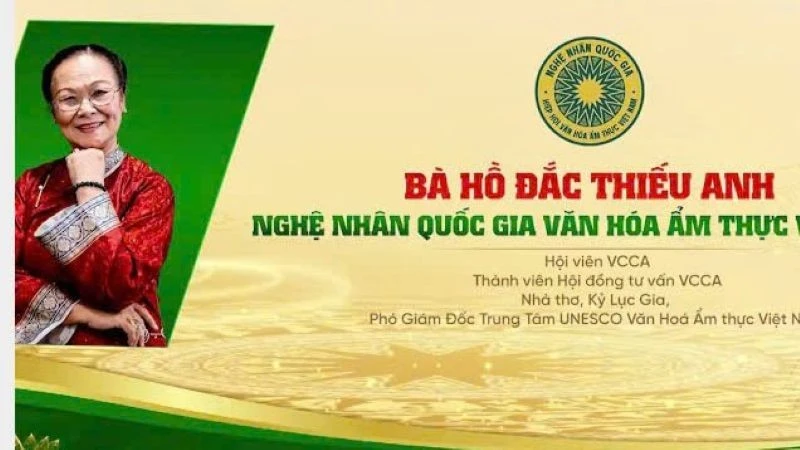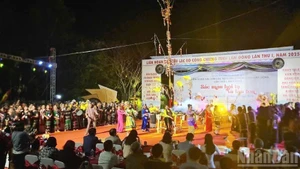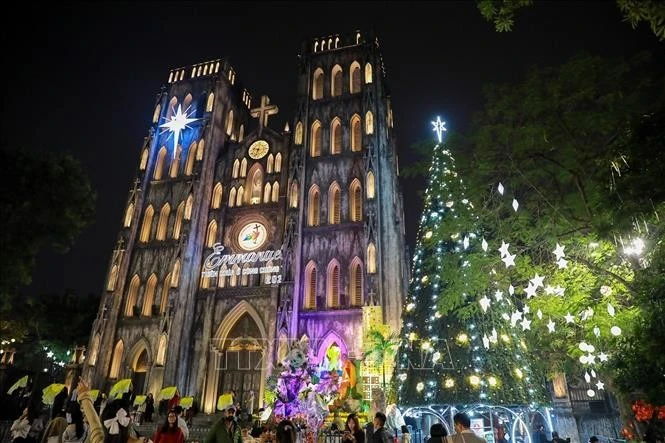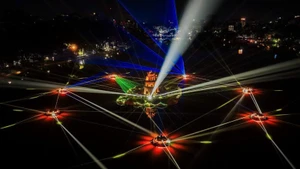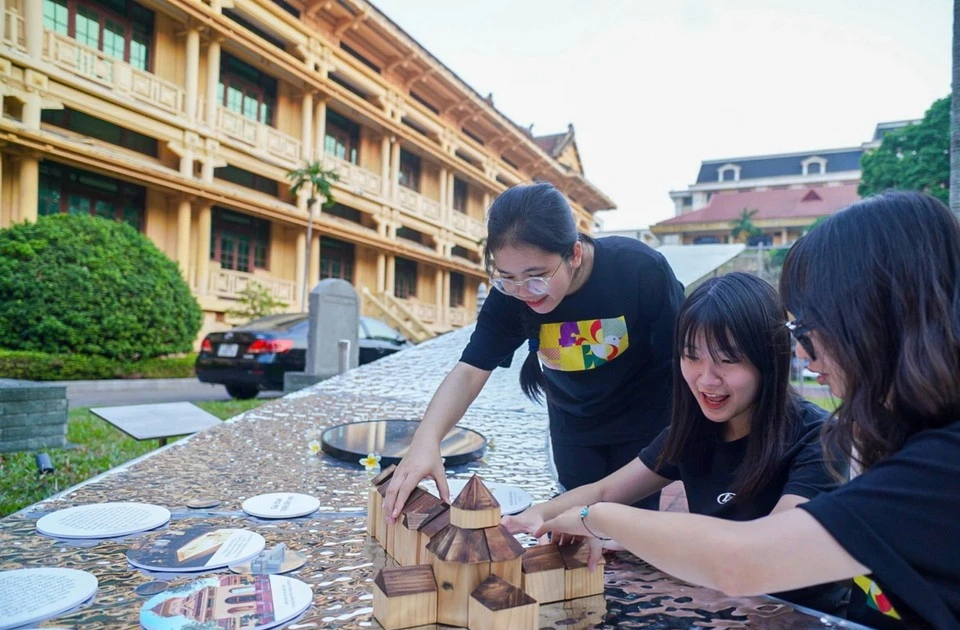Eight countries and dozens of silk and brocade villages of Vietnam will introduce their products in this year’s festival.
In addition, more than 80 artisans will perform their traditional weaving and dyeing methods at the event.
Legend has it that silk weaving dated back to the Hung Kings Dynasty, and through ups and downs of the history, silk weaving has been well preserved at Van Phuc village (Hanoi), Nha Xa village (Ha Nam), Ma Chau village (Quang Nam), Tan Chau village (An Giang), and Bao Loc village (Lam Dong province), among others.
Meanwhile, the art of brocade weaving is a typical cultural feature of ethnic minority groups across the country. Particularly, many ethnic communities have their traditional brocade weaving bestowed with the national intangible cultural heritage status, including Hre in Ba Thanh commune, Quang Ngai province’s Ba To district, Ta Oi in Thua Thien-Hue province’s A Luoi district, and Co Tu in Quang Nam province.
Distinct patterns on unique brocade fabric have been favoured by many fashion designers for years. Most recently, renowned designers Minh Hanh introduced a collection of “ao dai” (Vietnamese traditional dress) made of silk, with brocade patterns frequently used by the Vietnamese ethnic people to Russian fashion-lovers, art critics and researchers. The patterns were hand-woven by female members of ethnic groups across the country.
